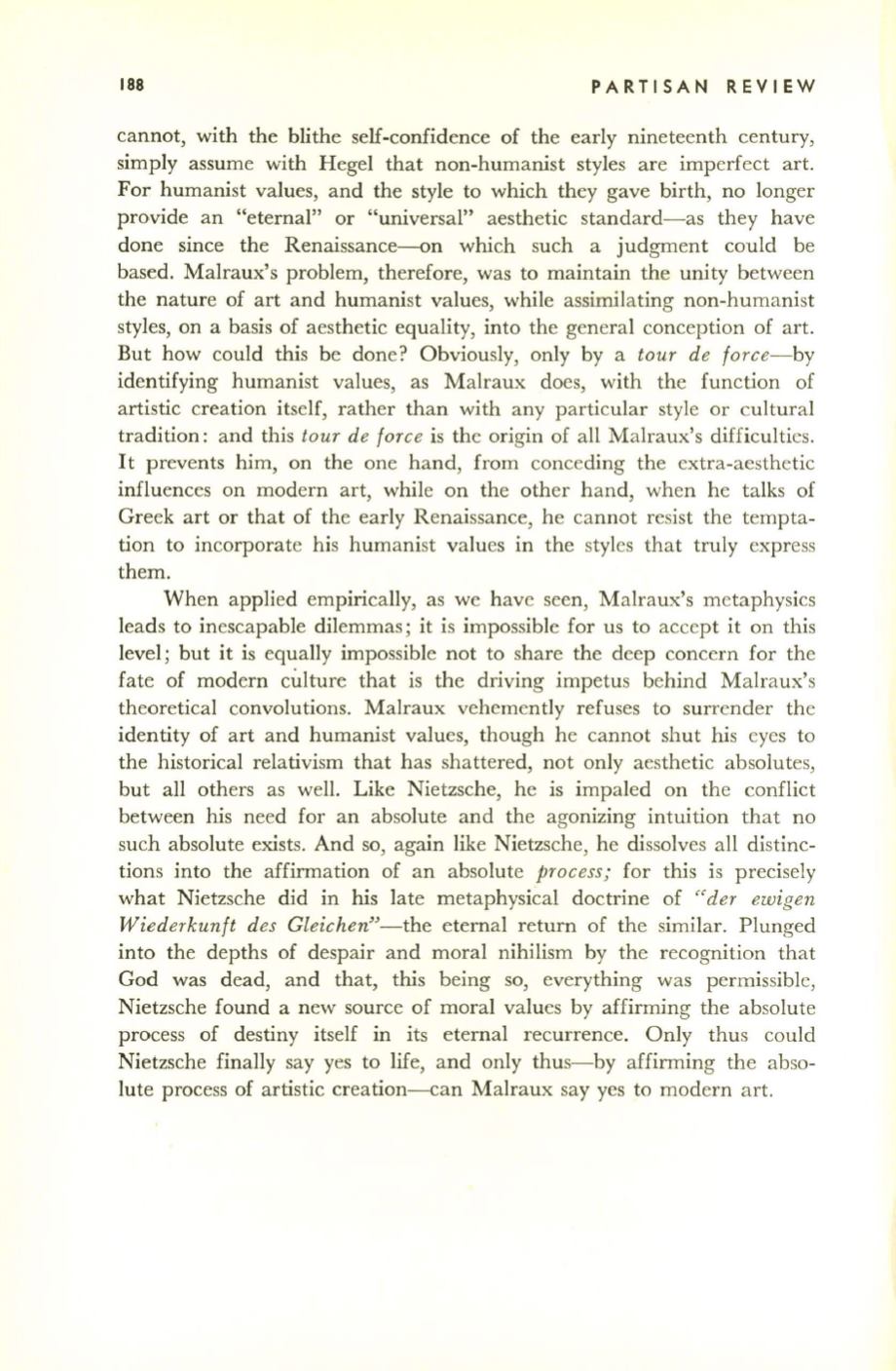
188
PARTISAN REVIEW
cannot, with the blithe self-confidence of the early nineteenth century,
simply assume with Hegel that non-humanist styles are imperfect art.
For humanist values, and the style to which they gave birth, no longer
provide an "eternal" or "universal" aesthetic standard-as they have
done since the Renaissance--on which such a judgment could be
based. Malraux's problem, therefore, was to maintain the unity between
the nature of art and humanist values, while assimilating non-humanist
styles, on a basis of aesthetic equality, into the general conception of art.
But how could this be done? Obviously, only by a
tour de force-by
identifying humanist values, as Malraux does, with the function of
artistic creation itself, rather than with any particular style or cultural
tradition: and this
tour de force
is the origin of all Malraux's difficulties.
It prevents him, on the one hand, from conceding the extra-aesthetic
influences on modem art, while on the other hand, when he talks of
Greek art or that of the early Renaissance, he cannot resist the tempta–
tion to incorporate his humanist values in the styles that truly express
them.
When applied empirically, as we have seen, Malraux's metaphysics
leads to inescapable dilemmas; it is impossible for us to accept it on this
level; but it is equally impossible not to share the deep concern for the
fate of modern culture that is the driving impetus behind Malraux's
theoretical convolutions. Malraux vehemently refuses to surrender the
identity of art and humanist values, though he cannot shut his eyes to
the historical relativism that has shattered, not only aesthetic absolutes,
but all others as well. Like Nietzsche, he is impaled on the conflict
between his need for an absolute and the agonizing intuition that no
such absolute exists. And so, again like Nietzsche, he dissolves all distinc–
tions into the affirmation of an absolute
process;
for this is precisely
what Nietzsche did in his late metaphysical doctrine of
"der ewigen
Wiederkunft des Gleichen"-the
eternal return of the similar. Plunged
into the depths of despair and moral nihilism by the recognition that
God was dead, and that, this being so, everything was permissible,
Nietzsche found a new source of moral values by affirming the absolute
process of destiny itself in its eternal recurrence. Only thus could
Nietzsche finally say yes to life, and only thus-by affirming the abso–
lute process of artistic creation-can Malraux say yes to modern art.


